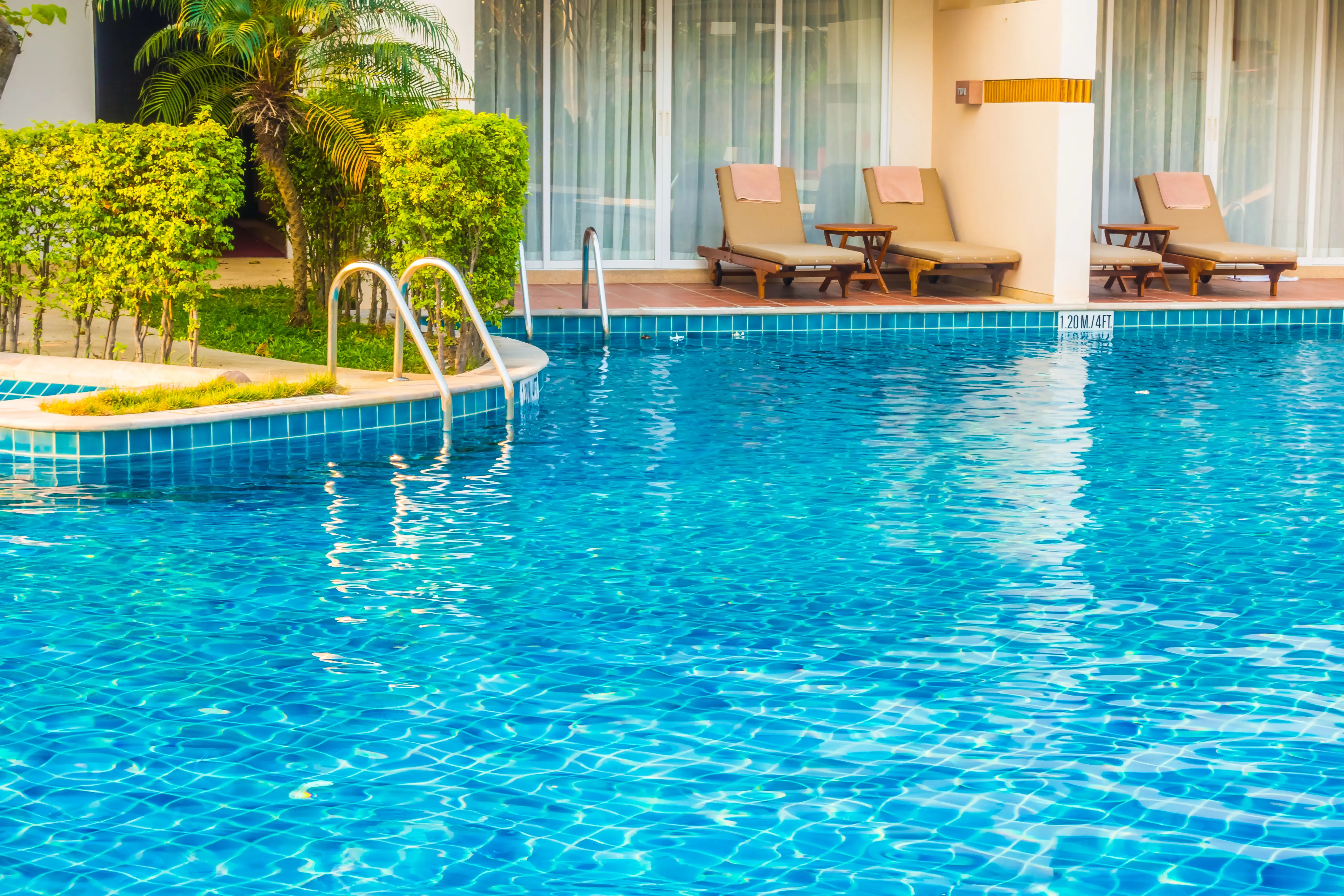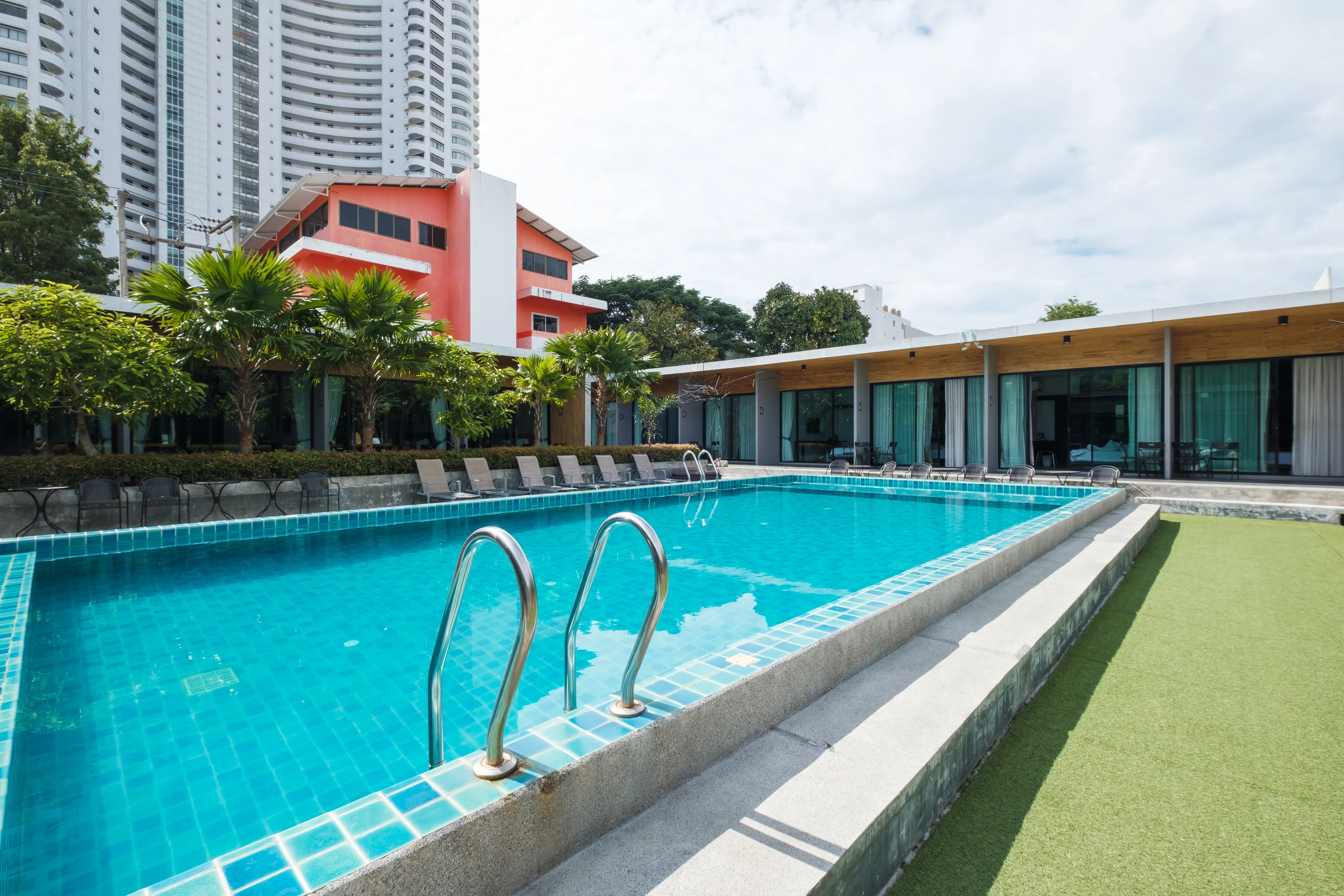A green pool has to be the most frustrating problem any pool owner can have. Not only does it make the water uninviting, but it can also indicate potentially serious issues that, if not taken care of, will immediately lead to expensive repairs. Algae Green causes green pools; other times, they are due to insufficient maintenance, poor water chemistry balance, or environmental factors. Well, the good news is that with some intervention, the pool can be restored to sparkling clean, and the problem is prevented from recurring.
This detailed guide will walk you through the underlying causes of a green swimming pool, provide step-by-step guidance to remedy the situation and provide preventive measures. For every little bit, from a hint of green to a full-blown algae bloom, these handy tips will lead you forward in restoring your pool.
Why Does a Pool Turn Green?
Understanding the cause of the problem is the first step in fixing a green pool. Here are some common reasons your pool might have turned green:
Algae Growth
Rainwater collects organic matter from the atmosphere and thus provides nutrients needed for algae growth and promotes the establishment of growing conditions within the pool. There may be several different species of algae pooling with the water in your pool, but three major types can take over:
Green Algae: It is the most prevalent in pools. It makes the water murky green.
Yellow or Mustard Algae: It’s found in shady areas or spots with inefficient water flow.
Black Algae: It is difficult to remove and often settles inside cracks in the pool’s surface.
Imbalanced Pool Chemistry
If your pool’s chemical levels are not properly maintained, algae can flourish. Key chemical imbalances include:
Low Chlorine Levels: Chlorine is essential for killing bacteria and algae. When levels drop, algae growth is more likely.
Incorrect pH Levels: The pH level of your pool should be between 7.2 and 7.6. If the pH is too high or too low, it can affect the effectiveness of chlorine and lead to algae growth.
Low Alkalinity: If the alkalinity level in your pool is too low, it can cause pH levels to fluctuate and make it easier for algae to grow.
Filtration Issues
If your pool’s filtration system isn’t working properly, the water may not circulate as it should. Poor circulation allows debris and contaminants to settle in the pool, creating an environment for algae to thrive. Additionally, a clogged or dirty filter can reduce the effectiveness of chlorine and other pool treatments.
Environmental Factors
Rain, wind, and debris can introduce organic matter like leaves, dirt, and pollen into your pool. This can provide nutrients for algae to feed on and result in a green pool. Additionally, environmental factors such as the amount of sunlight your pool receives and the presence of nearby trees can influence algae growth.
Heavy Pool Use
When your pool is used by a lot of swimmers, it can introduce dirt, oils, and other contaminants that can fuel algae growth. Without regular cleaning and chemical maintenance, these factors can lead to a green pool.
How to Fix a Green Pool
If you’ve found yourself with a green pool, don’t panic! With the right steps, you can restore your pool to its crystal-clear condition. Here’s what you need to do.
Test Your Pool Water
The first step in fixing a green pool is to test your pool water. A proper water test will help you determine the exact cause of the issue and guide you on the necessary adjustments. You can either purchase a pool testing kit or have a professional service test the water for you.
Key factors to test include:
pH levels: Ideal range: 7.2–7.6
Chlorine levels: Ideal range: 1–3 ppm
Total Alkalinity: Ideal range: 80–120 ppm
Calcium Hardness: Ideal range: 200–400 ppm
Once you have the test results, you can begin adjusting your pool’s chemistry.
Shock the Pool
Shocking your pool is one of the most effective ways to kill algae. Pool shock contains a high dose of chlorine or other sanitizers that will eliminate algae and other contaminants. Follow the instructions on the product label to determine how much pool shock you need based on the size of your pool.
When to shock: It’s best to shock your pool in the evening or at night, as the sun can cause the chlorine to dissipate quickly.
How to add shock: Pour the shock in the deepest part of the pool and allow the pump to circulate the water for several hours. Make sure to run the pump for at least 24 hours after shocking the pool to ensure proper distribution of the chlorine.
Brush and Vacuum the Pool
While the shock treatment is working, you’ll need to manually remove any algae clinging to the pool surfaces. Use a pool brush to scrub the walls, floor, and any other areas where algae may be concentrated. Be thorough and reach into all the corners, as algae can hide in these spots.
After brushing, vacuum the pool to remove the dead algae and debris. Make sure to empty the vacuum bag regularly to avoid clogging.
Clean or Replace the Filter
A dirty or clogged filter will prevent the chemicals from circulating properly and hinder the removal of algae. Whether you have a cartridge, sand, or DE filter, it’s essential to clean or replace it to ensure that it’s working effectively.
Cartridge filters: Remove the cartridge and rinse it thoroughly with a hose. If it’s too clogged, you may need to replace it.
Sand filters: Backwash the filter to flush out the debris.
DE filters: Backwash and then replace the DE powder according to the manufacturer’s instructions.
Add Algaecide (If Necessary)
If the algae problem persists after shocking and brushing, you may need to use an algaecide. This specialized product targets algae growth and can prevent it from coming back. There are several types of algaecides, including:
Copper-based algaecides: These work well for killing algae but can sometimes stain the pool surface.
Polymer-based algaecides: These are gentler on the pool surface and help prevent algae growth.
Follow the manufacturer’s instructions for the correct dosage based on your pool’s size.
Retest the Water and Adjust Chemistry
After completing the treatment steps, it’s essential to retest the water to ensure the chemical levels are balanced. If necessary, adjust the pH, alkalinity, and chlorine levels to the appropriate ranges.
How to Prevent Green Pools in the Future
Now that your pool is sparkling clean, it’s time to focus on preventing algae growth in the future. With regular maintenance and the right strategies, you can keep your pool free from algae.
Regularly Test the Water
Testing the pool’s water on a weekly basis is essential to ensuring proper chemical balance. Regular testing will help you stay on top of any changes in pH or chlorine levels and prevent algae from taking hold.
Ensure Proper Filtration and Circulation
The filter is a key component in preventing algae growth. Make sure the filter runs for at least 8-12 hours a day, depending on pool size. If the filtration system is outdated or malfunctioning, consider upgrading to a more efficient system. A well-maintained filter will ensure that the pool water is clean and properly circulated.
Regular Pool Cleaning
Skim the pool’s surface regularly to remove leaves and debris. Brush the walls and floor of the pool at least once a week to remove any dirt or algae that may begin to accumulate. Vacuum the pool at least once a week to remove debris from the bottom.
Use a Pool Cover
Using a pool cover when the pool is not in use can help prevent debris from entering the water and keep the water cooler, reducing algae growth. This is especially useful during the colder months or if you have a pool that is not used daily.
Maintain Proper Pool Chemistry
Maintaining the correct chemical levels is key to preventing algae growth. Always ensure the chlorine levels are within the ideal range of 1–3 ppm. Make sure the pH level stays between 7.2 and 7.6, and check the alkalinity and calcium hardness regularly to ensure everything is balanced.
Use Algaecide Regularly
Even if your pool is clear, it’s a good idea to add algaecide regularly as a preventative measure. This will help to ensure that algae does not have the chance to take root in your pool.
Why Choose Build My Pool?
At Build My Pool, we are dedicated to providing high-quality pool construction and maintenance services. We offer a comprehensive range of services designed to keep your pool in top condition all year round. Our expert team can help you with everything from pool design and installation to regular maintenance and repairs.
Here’s what we offer:
Expert Pool Design: Whether you want a modern, luxurious pool or a practical, family-friendly option, we can design a pool that fits your needs and budget.
Efficient Pool Maintenance: From chemical testing and balancing to cleaning and filtration services, we ensure that your pool stays clean and inviting.
Pool Repairs and Upgrades: If your pool equipment is outdated or malfunctioning, we offer expert repair and upgrade services to keep your pool functioning properly.
Energy-Efficient Solutions: We offer a range of energy-efficient pool equipment and solutions to help you save on electricity bills.
Conclusion
In conclusion, fixing a green pool requires a combination of proper water chemistry, effective filtration, and regular maintenance. By following the steps outlined, you can restore your pool’s clarity and keep it algae-free in the future. Regular testing, cleaning, and using algaecides will help prevent algae from returning. For expert help and reliable pool maintenance services, Build My Pool is here to ensure your pool stays in top condition year-round, providing you with a safe and inviting swimming experience.





